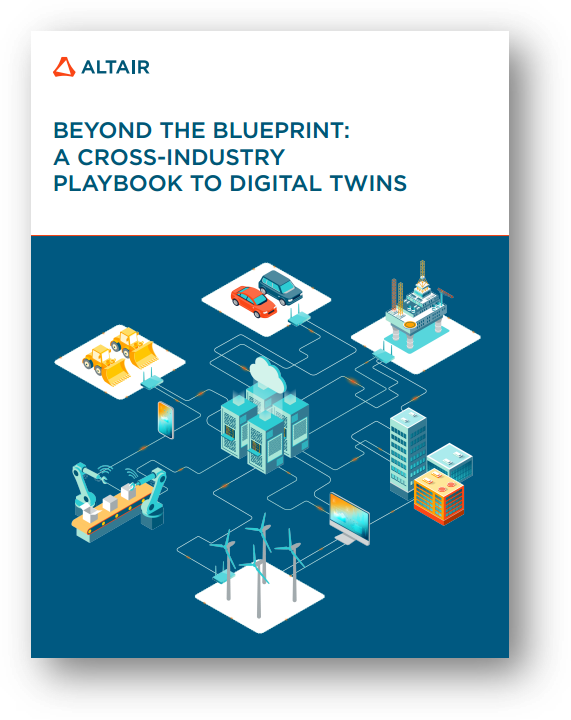Terms of Use | Privacy Notice | Data Privacy Framework | Cookie Notice | DMCA | Whistleblowing |
© Altair Engineering Inc. All Rights Reserved.

We’re designing the future in a world that’s too fast, too complex, and too high stakes for trial and error. Enter the digital twin, a real time, virtual replica that lets you test, predict, and optimize without touching the physical world.
From reducing emissions to slashing downtime, and from smarter products to self-optimizing systems, leading companies are using digital twins to stay ahead. Digital twins are not just digital models, they’re decision-making engines powered by data, simulation, artificial intelligence (AI), and high-performance computing (HPC).
The world cares about digital twins because they’re not a nice-to-have, they’re becoming the necessary operating system for innovation.
6 Problems Digital Twins are meant to solve
Digital twins aren’t just simulated 3D models — they’re strategic tools that solve real business problems. From product design to operations, following are six reasons digital twins are becoming essential across industries — and where they drive the most value.
7 Things to know before building your digital twin
Whether you’re designing smarter products, optimizing complex systems, or scaling predictive maintenance, building a digital twin is a game-changer — but only if you do it right. Use this checklist to evaluate your readiness and avoid common mistakes.
9 Use cases that Matters
Explore how digital twins are solving real-world challenges across industries — from predictive maintenance and intelligent operations to sustainability and next-gen product design. These nine use cases show how simulation, AI, and real-time data combine to drive smarter decisions and better outcomes.